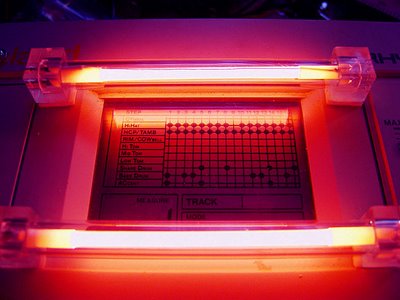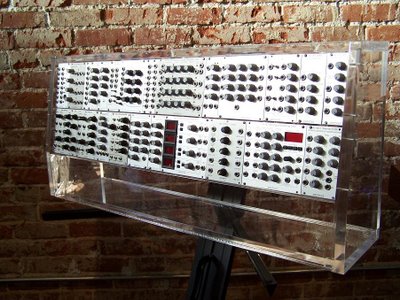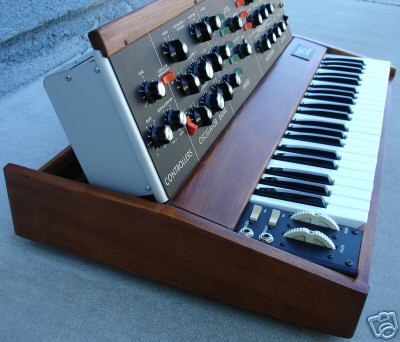
Title link takes you to shots pulled from
this auction.
Details:
"The Roland TR-707 is a vintage drum machine with 16 classic sounds, individual outputs for each sound, indvidual mixer level controls plus accent level, the excellent Roland grid based programming interface, trigger out, DIN sync, MIDI, tape sync and a whole host of extra features. It even has 909 samples for the hats!
The mods we have installed on this machine consist of:
Cold Cathode Tubes - If you are in the market for a gratuitously cool looking drum machine then look no further. This machine features two pink/red (they look a lot more orange than they really are in the photos) cold cathode tubes mounted above and below the LCD screen. As well as looking obscenely sexy these lamps also allow you to actually see whats happening on the screen on a dark stage, which as all 707 users will know, is a bit of a novelty. There is a big red button on the back of the machine to turn the lamps on and off and the invertor to power the tubes is mounted on the left of the machine. You will need a power supply able to deliver 12V and at a minimum of 700 milliamps in order to use the lamps The machine will run on a lower rated power supply with the lamps turned off.
Main Patchbay - Connections made between the sockets on the patchbay with standard minijack patch cables cause all kinds of distortion, ring modulation, sound swapping, modulation and general alien effects to be applied to the sounds. multiple connections can be made at any one time offering thousands of different percussion grinding options. MIDI functions are not affected in any way. The machine functions as normal with no patch cables in place
Patchbay Multiples - These are simliar to the kind of patching multiples you would find on a modular synth. They consist of three sockets linked together internally. This allows you to take a cable from a patchbay source socket, plug it into a multiple to split the signal and take two further cables from the multiple outputs to two patchbay destinations. This gives vastly expanded sample grinding options.
Patchable Switches - These are two switches connected to two sockets that can be patched in line with any of the main patchbay connections. Essentially this allows you to find two effects you like and turn them on and off at the flick of a switch instead of having to repatch any cables.
3 Way Distortion Switches - These are two switches on the right of the machine. Each switch has two different distortion settings and a centre off position. These switches can create anything from a mild crunch to the kind of sounds that wouldn't sound out of place at a panel beating convention.
Hi-Hat decay knobs - These are the two knobs on the bottom right of the machine. They control the decay of the open and closed hi-hat sounds. Seeing as the open and closed hats actually use the same sound sample on the 707, the open hat knob sets the decay of the open hat and acts as a kind of master decay level. The closed hat knob then sets the decay of the closed hat in relation to the master setting, if that makes any sense at all.
Audio input - This jack on the side of the machine routes any external signal through the Hi-Hat channel. The hats are replaced by the external signal which is cut and gated according to the programmed hi-hats pattern and decay knobs."
via
GetLoFi.
 "The EAR Group is excited to announce the addition of Sean Price and the Synthbox into the consortium.
"The EAR Group is excited to announce the addition of Sean Price and the Synthbox into the consortium. 






















































